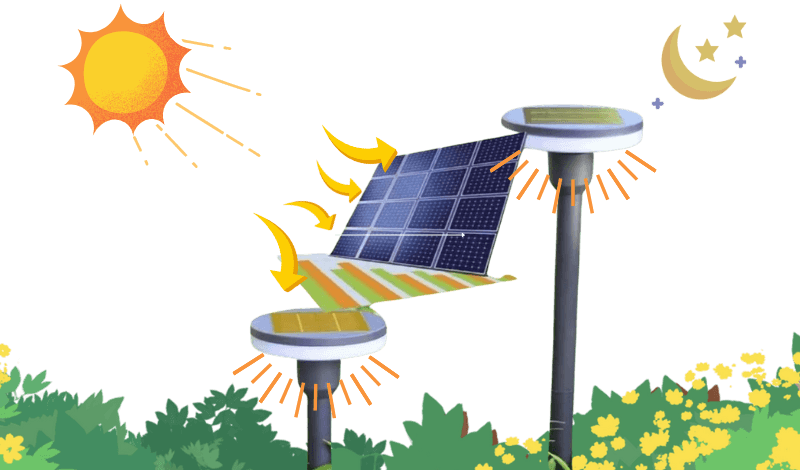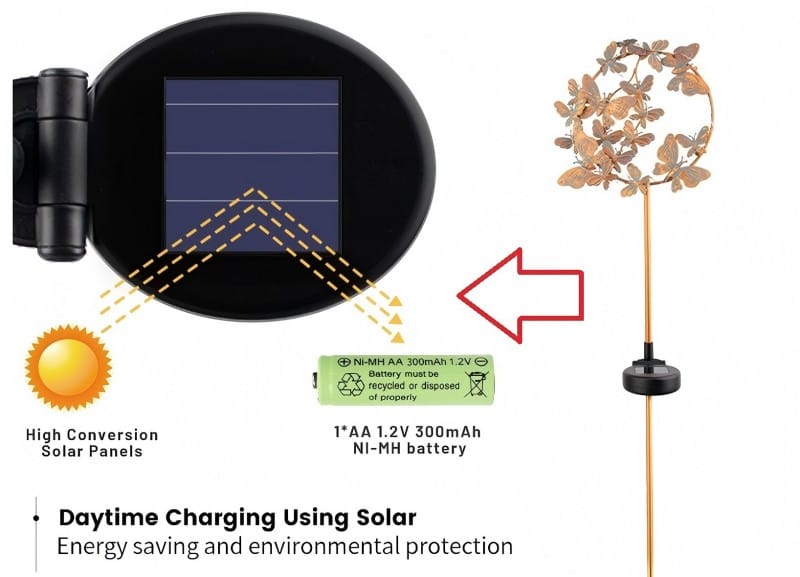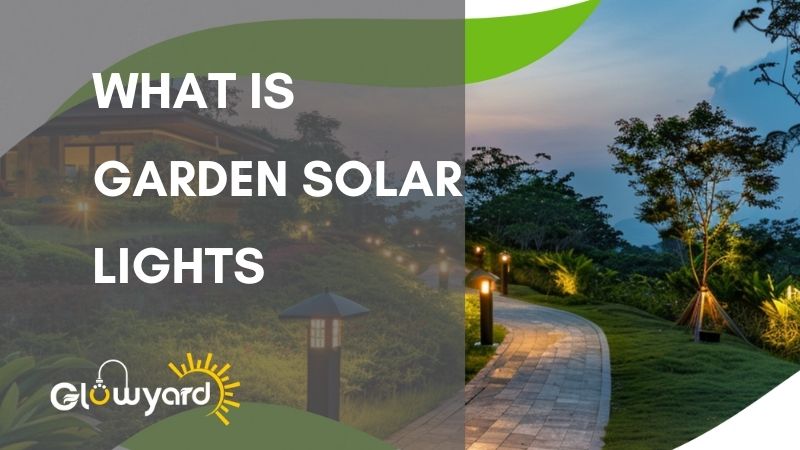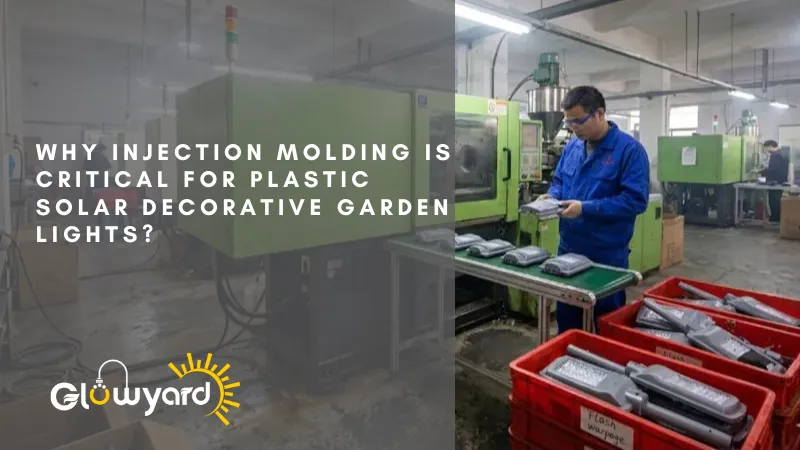What Is Garden Solar Lights?
Garden solar lights are where art meets energy saving, and decoration meets practicality. They’re a top choice for eco-conscious outdoor lighting. Garden solar lights are outdoor lighting fixtures that run on solar energy. They are sustainable, cost-effective, and easy to install, making them a smart alternative to traditional lights.

These lights are more than just a trend. They reflect a growing need for efficient, eco-friendly products that blend design and function. Let me walk you through how they work, why they’re better than traditional options, and how to choose the right one for your garden.
How Do Garden Solar Lights Work and What Are Their Main Components?

Understanding how solar lights work helps you appreciate their value and spot quality differences before you buy. Garden solar lights use photovoltaic panels to convert sunlight into electricity, which is stored in a battery and powers an LED light when it gets dark.
For knowing how do garden solar lights works, please check this video "How do solar panels work? – Richard Komp".
The Main Components of Garden Solar Lights
| Component | Function |
|---|---|
| Solar Panel | Collects sunlight and converts it into electricity |
| Rechargeable Battery | Stores the electricity for night-time use |
| LED Light | Emits light with low power consumption |
| Light Sensor | Automatically turns the light on at dusk and off at dawn |
| Housing | The external structure that holds all parts and gives aesthetic appeal |
Every part plays a role. The panel must be efficient, the battery must be durable, and the sensor must be sensitive enough to detect lighting conditions. Some suppliers cut corners—using poor batteries or weak LEDs—which can cause product failure. At Glowyard, we use only tested materials that meet European standards. Over the years, we’ve developed over 300 unique solar garden light designs, and each one is engineered for quality and reliability.
What Are the Benefits of Using Solar Lights in a Garden Compared to Traditional Lighting?
Traditional lighting requires wiring, electricity, and constant upkeep. Solar lighting skips all of that.
Solar garden lights save on electricity bills, reduce installation hassle, and offer an environmentally friendly solution for outdoor spaces.

Comparing Solar Lights vs Traditional Lights
| Feature | Solar Garden Lights | Traditional Garden Lights |
|---|---|---|
| Power Source | Solar energy (free and renewable) | Electricity (paid and non-renewable) |
| Installation | No wiring needed, easy setup | Requires wiring and professional help |
| Maintenance | Low (no electrical parts to fail) | Medium to high (bulbs, wires, sockets) |
| Operation Cost | None | Continuous electricity cost |
| Environmental Impact | Low (green energy) | High (depends on power plant emissions) |
Switching to solar lighting is not only smart for your wallet but also a statement of values. It says you care about the environment and smart design. Many of our clients, like Mark from Germany, have switched to solar products for their reliability and market appeal. They report increased customer satisfaction and smoother logistics thanks to fewer installation issues.
What Types of Garden Solar Lights Are Available and How to Choose the Right One for Your Outdoor Space?
Too many choices can confuse buyers. But if you understand your space, it’s easy to pick the right type. Garden solar lights come in many types—string lights, stake lights, wall lights, and more. Choose based on function, style, and placement.
For knowing full types of solar garden lights and their uses, please read this post :"A Complete Guide to Garden Solar Light Types and Their Best Use Cases"

Common Types of Garden Solar Lights
| Type | Description & Use Case |
|---|---|
| Stake Lights | Inserted into the ground, ideal for lighting walkways and borders |
| Hanging Lights | Hung from trees, poles, or hooks, add decorative flair |
| Wall-mounted Lights | Attached to walls or fences, perfect for perimeter lighting |
| String Lights | Flexible, good for decorating trees, fences, or party settings |
| Decorative Resin Lights | Artistic pieces, often shaped like animals or lanterns, for accents |
| Metal Lights | Durable, modern look, often for pathways or upscale patios |
How to Choose the Right One?
- Define the Purpose: Is it for ambiance, safety, or decoration?
- Match the Style: Rustic, modern, or whimsical? Solar lights come in all styles.
- Consider the Weather: Go for weather-resistant materials if you face rain or snow.
- Think About Placement: Make sure your lights get enough sun during the day.
At Glowyard, we offer OEM/ODM services so you can create custom solutions for your clients. With five production lines and a dedicated R&D team, we help our B2B partners create tailored lighting that meets their local market needs.
Conclusion
Garden solar lights combine sustainability with design appeal. Their simple operation, zero electricity cost, and flexible styles make them an ideal choice for modern outdoor spaces—especially as consumers grow more eco-conscious.
As pioneers in garden solar lighting, GlowYard transforms outdoor decoration into a greener experience. From modern stake lights to handcrafted decorative lamps, our products—crafted by Soume Lighting Co., Ltd.—help buyers capture market demand with energy-efficient, high-style solar lighting that stands out.
Are you looking for a Solar garden lights supplier?
At Glowyard, we’re committed to providing high-quality solar lighting solutions that deliver superior performance and longevity. We use the best battery technologies to ensure that our solar garden lights offer consistent brightness and reliability. For distributors, retailers, and homeowners, we’re here to support you with products that last and exceed expectations.
If you’re a outdoor lighting distributor, retailer or brand owner who is looking for a certified & trusted solar garden lights supplier, feel free to reach out. We offer:
- Free samples for qualified buyers
- OEM & ODM for solar garden lights
- Full pre-shipment QC and warranty support
📩 Interested in learning more or placing an order?
Visit www.glowyard.com or email us at info@glowyard.com for more details!

Glowyard new solar garden light product launch with creative outdoor designs













